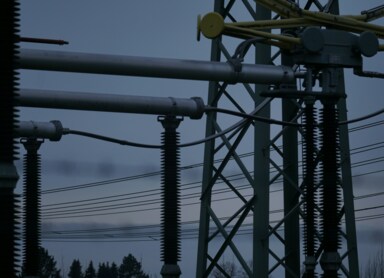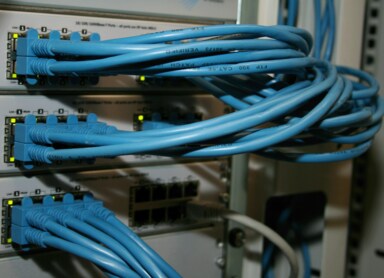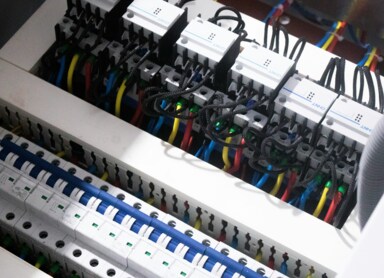Energy class – what it is and what it means
When choosing household or office appliances, you’ll come across an energy class label. It visually represents how much electricity a device consumes and whether it is cost-efficient and environmentally friendly. Learn what energy classes are and how to interpret them.
Energy class – what it is and why it matters
The energy class is part of an energy label, which is a piece of information placed on electrical devices to indicate their key performance parameters. In addition to the energy class, the label also provides data such as noise emissions or water consumption.
The energy class itself shows how much electric energy a given appliance uses per operating cycle, thus defining its energy efficiency. The higher the energy efficiency, the less electricity the device requires to function. Conversely, a lower class means higher energy consumption. Therefore, choosing an energy-efficient appliance can directly affect your electricity costs. By planning your purchases wisely, you can effectively reduce power consumption.
The energy class primarily depends on the technology used in the device. Newer, more advanced equipment generally consumes less power than older models. However, it’s important to note that the energy class does not indicate durability. Devices in lower energy classes also tend to be less environmentally friendly.
Displaying energy labels on products is a legal requirement under European Union regulations. Thanks to standardized testing procedures, only products developed according to common EU guidelines can enter the market. This allows consumers to compare not only devices from the same manufacturer but also across different brands.
Energy classes – how to read and differentiate them
Energy classes are updated periodically by the EU to reflect technological progress. The latest update came into force on March 1, 2021, introducing a seven-level energy efficiency scale and eliminating the old “A+” ratings.
Previously, nearly 80% of products were labeled within the “A” range, and manufacturers competed by adding more “+” symbols (e.g., A++, A+++). This made it difficult for consumers to tell the difference between products. The new system is simpler and more transparent.
Energy classes A, B, C… – what do the letters mean?
Here’s how the current labeling system works:
- Class A – dark green: the most energy-efficient devices with the lowest power consumption
- Class B – green: slightly higher power demand than class A
- Class C – light green: equivalent to the former A+++, still relatively energy-saving
- Class D – yellow: corresponds to the old A++
- Class E – light orange: corresponds to the old A+
- Class F – dark orange: high power consumption, not economical
- Class G – red: the least energy-efficient devices with the highest power usage
It’s important to note that energy classes are determined separately for different types of appliances (refrigerators, dishwashers, washing machines, dryers, vacuum cleaners, etc.). Each product group has its own Energy Efficiency Index (EEI) range, meaning you can’t directly compare a vacuum cleaner in class B with a refrigerator in class B.
Example EEI ranges
Dishwashers
-
A → EEI < 32
-
B → 32 ≤ EEI < 38
-
C → 38 ≤ EEI < 44
-
D → 44 ≤ EEI < 50
-
E → 50 ≤ EEI < 56
-
F → 56 ≤ EEI < 62
-
G → EEI ≥ 62
Refrigerators
-
A → EEI ≤ 41
-
B → 41 < EEI ≤ 51
-
C → 51 < EEI ≤ 64
-
D → 64 < EEI ≤ 80
-
E → 80 < EEI ≤ 100
-
F → 100 < EEI ≤ 125
-
G → EEI > 125
What does energy class G mean – and is it worth buying such equipment?
According to the current classification, class G marks the least energy-efficient appliances. Does that mean buying them is always a bad idea?
Not necessarily – it depends on your priorities. Lower-class appliances are usually cheaper to buy, which may be appealing if you’re on a budget. Additionally, if your household produces its own energy through solar panels (PV systems), the actual impact on both your budget and the environment will be minimal, since the electricity comes from a renewable source.
In some cases, purchasing lower-class equipment can even be beneficial. For example, if your solar installation produces more electricity than you use, running less efficient appliances can increase self-consumption and prevent energy waste.
Therefore, for users without renewable energy sources, the energy class remains highly relevant. For prosumer households, its importance may be somewhat reduced.
How to interpret energy labels?
The current version of energy labels is straightforward — the higher the energy class, the darker and greener the color on the label.
However, the energy label also includes additional information about the appliance’s performance. For example, washing machines or washer-dryers must display:
- Energy consumption per cycle (for washing and drying separately)
- Washing performance (rated from A to G)
- Maximum spin speed
- Load capacity (for washing and drying separately)
- Water consumption per full load
- Noise level (for washing, drying, and spinning separately)
Energy labels and power savings – how to choose wisely
The new energy classification system helps consumers make informed, eco-friendly choices between appliances with different electricity needs. If you’re looking to reduce your electricity bills, this system is a valuable guide.
Beyond financial savings, choosing energy-efficient appliances also demonstrates social responsibility, especially if you don’t use renewable energy. Lower consumption reduces the demand for fossil fuels like coal, contributing to a cleaner environment.
Opting for energy-efficient equipment is one of the simplest yet most effective steps individuals can take to protect the planet. Small actions, when multiplied by millions of people, can lead to significant global change — and together, we can all be part of that transformation.






